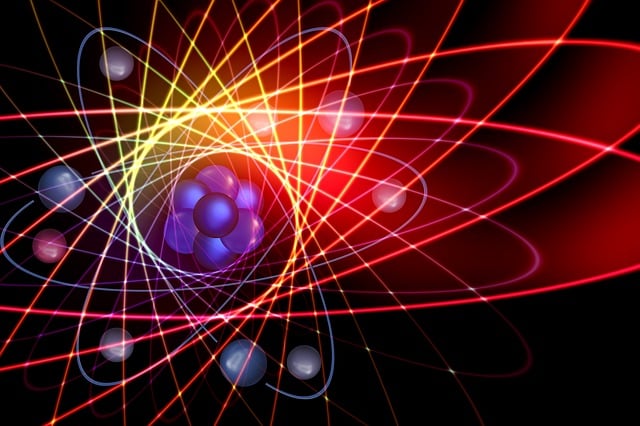Major Research Areas
The Department actively participates in front-line research in several major areas of Physics. The largest group is working in the Physics of Condensed Matter Systems in all its aspects, with interests more or less evenly divided between theoretical (CMT) and experimental work(CME), with strong cross-pollination of ideas between theory and experiment. High Energy Physics (HEP) group encompasses String Theory, Conformal Field Theory, Particle Physics phenomenology, Experimental High Energy physics, QCD, Lattice Gauge Theory, Cosmology, and GTR. Complex systems group includes Biological and Statistical Physics, and Nonlinear Dynamics. The Ion-Beam Nuclear Solid State and Plasma Physics Group is involved in applying Nuclear Physics Techniques to the study of materials and applications of Ion Beans in Science and Engineering. Photonics and Quantum technologies Group explores quantum optics, nano-photonics, nonlinear optics, quantum computations, Photoluminescence, bio-photonics etc.
To know more about the research activities, please visit the group webpages.
Major Research Facilities
Condensed Matter Physics:
Nitrogen and Helium Liquefiers, Superconducting magnets (up to 14 Tesla), Closed cycle Helium Refrigerators (down to 1.3 K), Experimental Setup for Resistivity, Hall Effect and Magnetic Susceptibility, Magnetoresistance, Specific Heat, Thermoelectric Power, Tunneling Conductance, Magnetostriction, Ultra high vacuum scanning probe microscope, superconducting quantum interference device (SQUID) based Magnetic Properties Measurement System (MPMS) with 10-6 emu resolution and 1.7K - 350K temperature range and magnetic field up to 5 Tesla. We also have a Physical Properties Measurements System (PPMS) with a 14 Tesla superconducting magnet and helium–3 fridge with 300 mK base temperature. Scanning electron microscope (SEM) with electron beam lithography facilities for nano-scale patterning have been installed recently.
Some homemade facilities like variable temperature (8K–300K) scanning tunneling microscope (STM) with atomic resolution and conductance imaging, magneto-optic Kerr effect (MOKE) imaging of magnetic surfaces, Pulsed Excimer Laser ablation facility for synthesis of magnetic, superconducting and dielectric superlattices, high frequency measurements of vortex dynamics in superconductors, Raman and micro-Raman Spectroscopy set-up for correlated systems. There are also experimental set ups for Dielectric measurement including Ferroelectric hysteresis of bulk and thin film materials, Thermal expansion measurement, Broadband FMR spectroscopy of ultra-thin films, and Inverse Spin Hall Effect measurement.
Well-equipped facilities have been setup for opto-electronic characterization of semiconductor materials and devices. State of the art research facilities for organic semiconductors are available. The Department participates in major projects on Organic Electronics through Samtel Centre for display Technologies. For micro-fluidics, we have contact angle Goniometer, fluorescent microscope and high speed (10,000 fps) camera.
Optics Laboratories:
ND:YAG lasers, Excimer Laser, Double Monochromators, Photon Counters, Spectrofluorimeter, Box Car Averagers, Vibration free tables. Facilities exist for High Resolution Spectroscopy, Micro-Raman Spectroscopy, Laser based pump-probe measurements, Laser-Plasma Studies and Nonlinear Optics, Diode Lasers, spectrograph-CCD system, Optical Spectrum Analyzers and Fibre Optics System, Optical Lithography Set-up, Atomic Force Microscopy Facility (Park XE 70 machine with a 100micron X 100 micron scanner head and a liquid cell). Two new Labs - Quantum and Nano-Optics, Quantum Optics and Entanglement Lab. are being set up.
lon Beam and Nuclear Techniques Laboratory:
Mossbauer Spectrometer, Tandem particle accelerator, focused ion beam (FIB) with SEM column (Nova Lab 600) for Nano Microfabrication down to nm scales, modern 1.7 MeV Tandetron accelerator with capabilities of producing ion beams of almost all elemental species. The facility is equipped with a nuclear microprobe station for science and engineering applications such as proton and heavy ion beam writing, RBS, PIXE and ion Channeling E-beam deposition, Positron Annihilation, Mossbauer Studies at Low Temperatures.
Computational Facilities:
Physics cluster (Newton): 396 cores, 1.5 TB memory, Infiband switch. Chaos I: 256 cores, ½ TB RAM, Gigabit switch. Chaos II: 128 cores, ½ TB RAM, Two K10 GPU cards, Infiband switch. Many workstations including 3D capable visualisation stations. Dirac cluster for electronic structure calculations, 96 cores, 768 GB RAM. In addition, there are the following Institute facilities : hpc Cluster 1: 2994 cores, 100 TB storage, Peak rating 34.5 Tflops (Ranked 369 in June 2010 Top500 ranking). hpc Cluster II: 15,360 cores, 98TB RAM, Peak rating 316 Tflops (Ranked 130 in Nov 2013 Top500 ranking).
The Department organizes a yearly “Jagadishwar Mahanty Distinguished Lecture” (since the year 2005) by an eminent scientist which provides unique opportunity of interaction with faculty and students, and a “Research Scholars Day” involving short talks and poster presentations by research scholars in the department apart from the weekly colloquium and seminars.

